Меню
Страницы
Статья
Political processes of Kazakhstan at the beginning of the XXth Century
In the middle of the XIXth century, the process of Kazakhstan's entry into the Russian Empire was completed. Colonial oppression, the forcible seizure of fertile land from the Kazakhs led to the formation and emergence of political movements and parties at the beginning of the XXth century. Representatives of the national intelligentsia stood at the forefront of political thought. Each of its members, each participant was worried about the future, freedom and education of the Kazakhs. The possibility of conveying these problems to the tsarist government presented itself with the establishment of the First State Duma of the Russian Empire in 1906. From the Kazakhs, the deputies were: Akhmet Beremzhanov, Alikhan Bokeikhanov, Shaimerden Koshegulov and Alpysbay Kalmenov. This period can be characterized as the heyday of the political thought of the Kazakhs. On the other hand, according to the Manifesto of Emperor Nicholas II, the State Duma was dissolved in the same year.
The following year, 1907, elections were held to the II State Duma. This time, the deputies from the Kazakhs were: Tleuli Allabergenov, Akhmet Beremzhanov, Shaimerden Koshegulov, Temirgali Nurekeyev, Mukhamedzhan Tynyshpaev and Bakytzhan Karataev.
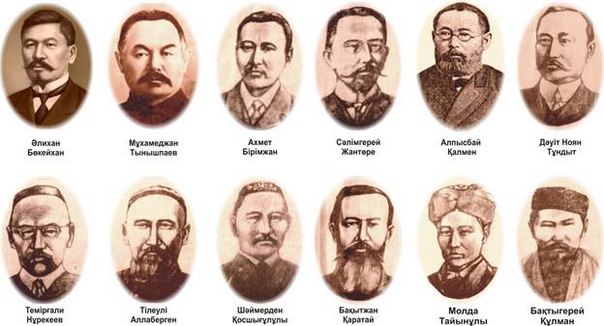
*Kazakh deputies of the I and II State Duma
Both in the 1st and 2nd convocations of the Legislative Authority, the Kazakhs were one of the founders and influential members of the Muslim Union faction, which united Tatars, Bashkirs and Uzbeks. In both convocations, they advocated agrarian reform in Russia, freedom of religion and democratic reforms.
Due to subjective reasons, after the next dissolution of the State Duma, no more Kazakhs were elected to new convocations. However, that does not mean at all that they abandoned their ideas, abandoned plans for the reorganization of the state.
To explain their program to the people, the political leaders of those years - Akhmet Baitursynov, Alikhan Bokeikhanov and Mirzhakyp Dulatov in 1913 begin to publish the newspaper "Kazakh". The chief editor was A. Baitursynov.
Further, in 1917, on July 21-28, the First All-Kazakh Congress held in Orenburg, where the Kazakhs acted as a united front and raised issues such as the provision of national autonomy, the solution of the agrarian issue and the emancipation of women. Already after this congress, three major trends were outlined in the political movement of Kazakhstan:
- "Alash" movement;
- Muslim movement;
- Tips.

* Newspaper "Kazakh"
The core of the Alash movement was the national intelligentsia. In 1917, this movement was transformed into the political party "Alash", the printed organ of which was the newspaper "Kazakh". The term "Alash" itself is associated with the history of the formation of the Kazakh people, who used it as a battle cry. After the collapse of the Russian Empire in February 1917, the Alash Autonomy was proclaimed on the territory of western, eastern and central Kazakhstan, with the capital in the city of Semey. Alikhan Bokeikhanov became the leader of the state. The autonomy was liquidated by the Soviet government in 1920. Additionally, its leaders, such as Akhmet Baitursynov, Khalel Gabbasov, Mukhmedzhan Tynyshpaev, Alikhan Bokeikhanov, continued to engage not in a political, but in an educational mission among the Kazakhs, teaching science and translating the works of Goethe, Byron, Pushkin into Kazakh.

*Government of Alash
Another equally important political movement was Shuro-i-Islam (Council of Islam). It was formed on the territory of southern Kazakhstan, and advocated complete religious freedom. Supporters of the movement in 1917 created their own state - the Turkestan Autonomy with its capital in the city of Kokand. Mustafa Shokay was the leader of the state. The autonomy lasted until 1918, when the pro-Soviet Armenian party "Dashnaktsutyun" massacred and beaten the local population, and the autonomy was liquidated. Its leader, who did not accept the communist idea, was forced to immigrate to France and from there to Germany.
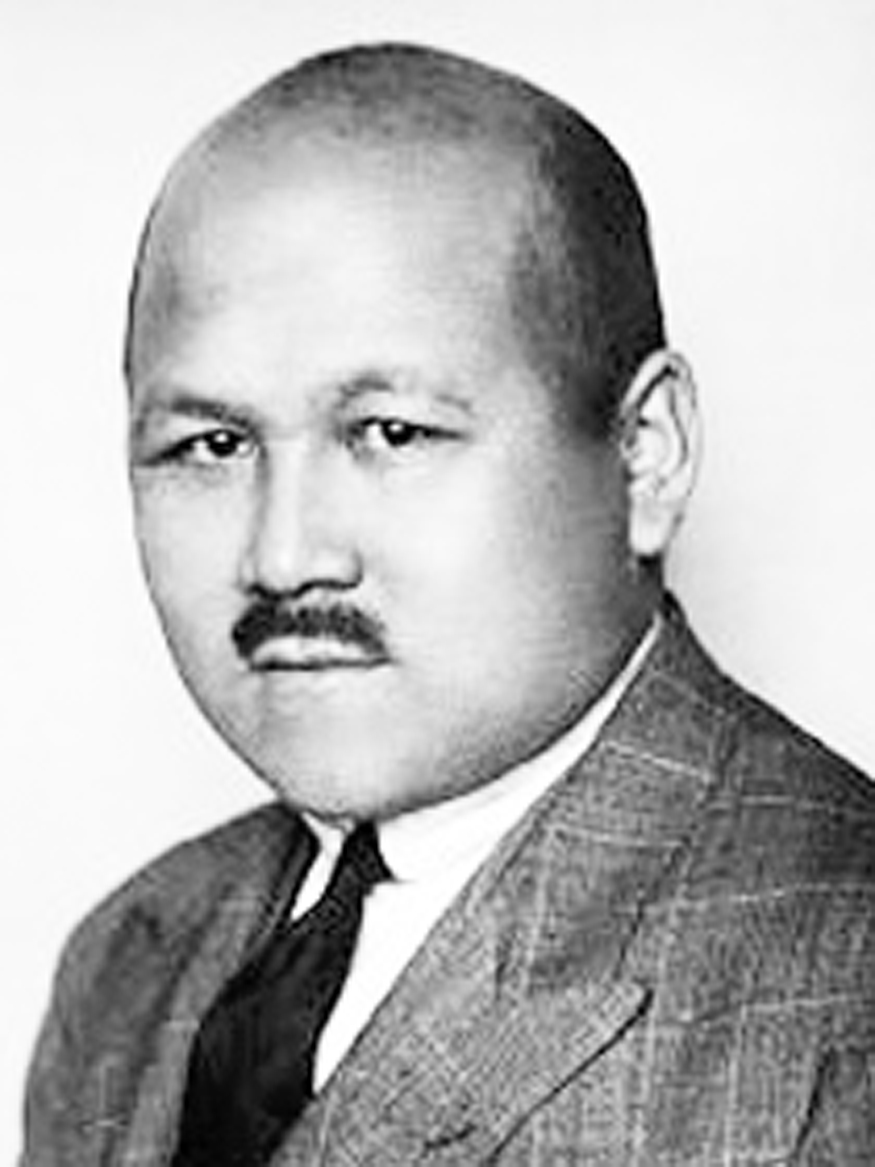
*Mustafa Shokai
The third major political movement on the territory of Kazakhstan was the Soviets. They mainly concentrated in the north of Kazakhstan, as well as in 1917 they created the “Ush Zhuz” party in the city of Omsk. The printed organ of this party was the newspaper of the same name. The party advocated the federal structure of Russia, and the unification of the Turkic and Muslim peoples under the flag of the Soviets. Already after the completion of the October Revolution, the leaders of "Ush Zhuz" began to actively establish Soviet power. These include Saken Seifullin, Turar Ryskulov, Sultanbek Khodzhanov, Nygmet Nurmakov.
The further history of Kazakhstan developed in such a way that the Soviets were able to fully establish their power, as well as in 1925 the Cossack Autonomous Socialist Republic was created with the center in Orenburg.
The period of 1925-1932 in the history of Kazakhstan was marked by industrialization and industrial growth. In Kazakhstan, chemical industry enterprises were built, and in 1930, the symbol of industrialization in the steppe - the Turkestan-Siberian Railway (Turksib). The actual construction manager of Turksib was Turar Ryskulov, and it was assisted by the first Kazakh railway engineer, Mukhamedzhan Tynyshpaev.
Further, in Kazakhstan, in this vast and rich country, a policy of forcible collectivization of agriculture began. The irrational and thoughtless actions of the Soviet government led to mass starvation of the Kazakh population. The most tragic events fell on 1931-1933. According to various estimates of scientists, the total number of deaths from starvation in Kazakhstan is 1.5 million people; another 1 million people were forced to flee the country.
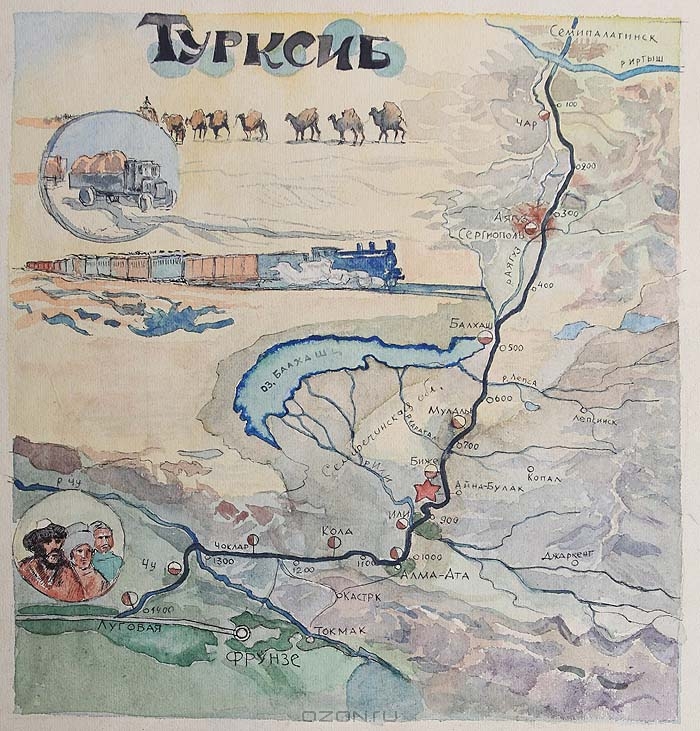
*Map of Turksib
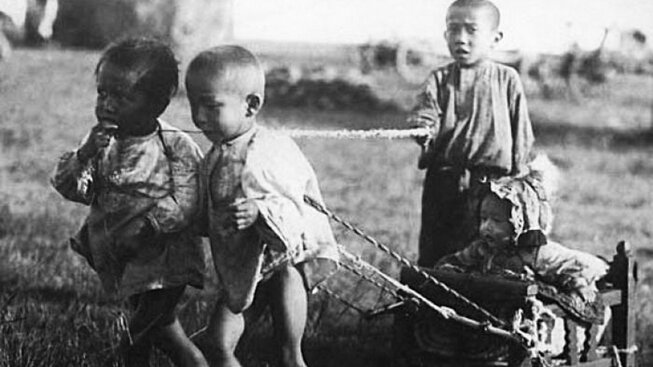
*Kazakh children during the famine in the steppe
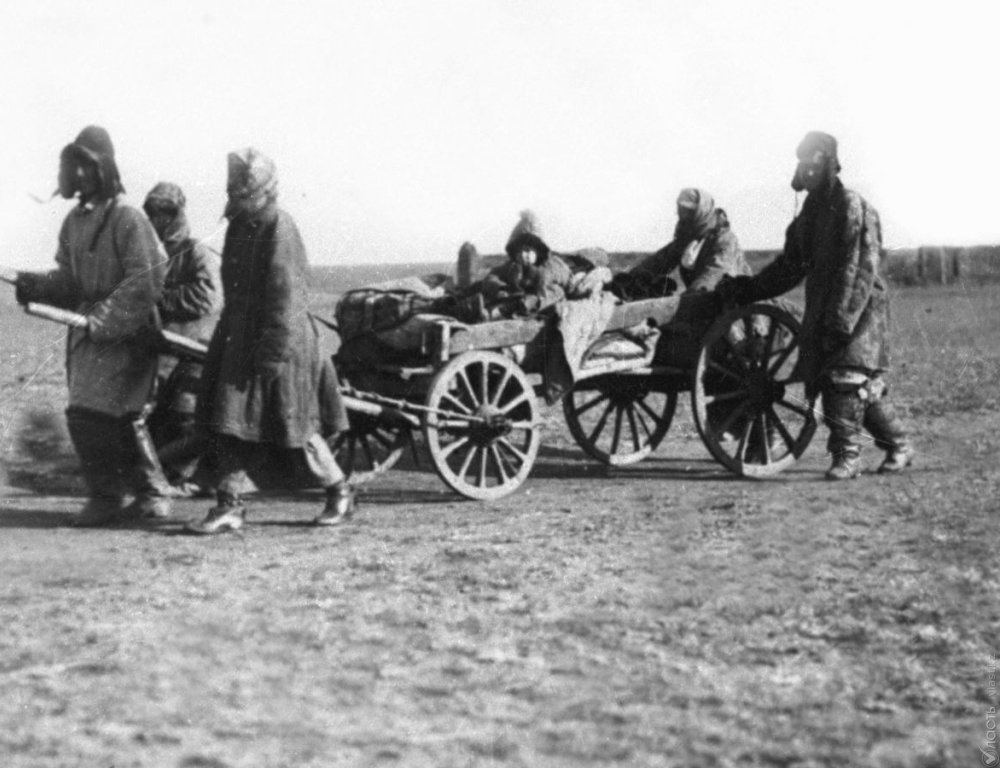
*Hunger-driven Kazakh people leave their native lands
The Kazakh population suffered especially hard because of Stalin's repressions in 1937-1939. The Kazakhs lost all the national intelligentsia, as well as those who helped the Soviets in establishing their power. In fact, all these people were the color of the Kazakh people. The repressed were shot without trial or investigation, and their wives and relatives were subjected to forced exile in labor camps and prisons.
In addition to the outbreak of famine and repression, the communist government adopted the tactics of the king: it began to forcibly deport the population from all corners of Soviet Russia to Kazakhstan. The first wave of settlers appeared on the territory of the Kazakhs in the 19th century, they were Russian and Ukrainian peasants, and exiled Polish revolutionaries. Further, during the First World War, prisoners of war, including Hungarians, were exiled to the territory of Kazakhstan. A large cemetery related to Hungarian prisoners of war is located in the west of Kazakhstan in Mangystau. The large burial of the so-called. "Red Magyars" in the city of Petropavlovsk. The Soviet government forcibly evicted to Kazakhstan in 1937 the Koreans from the Far East, in 1941 the Volga Germans, and in 1944 the Crimean Tatars, Chechens, Balkars, Ingush and Greeks. Despite such a tough domestic policy of the USSR, this contributed to the formation of a multinational, tolerant and multi-confessional modern Kazakhstan.
